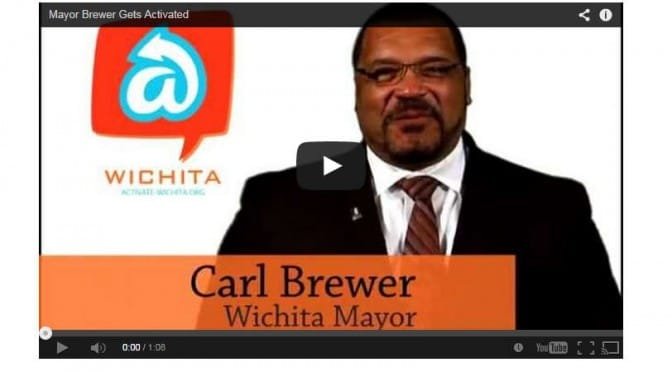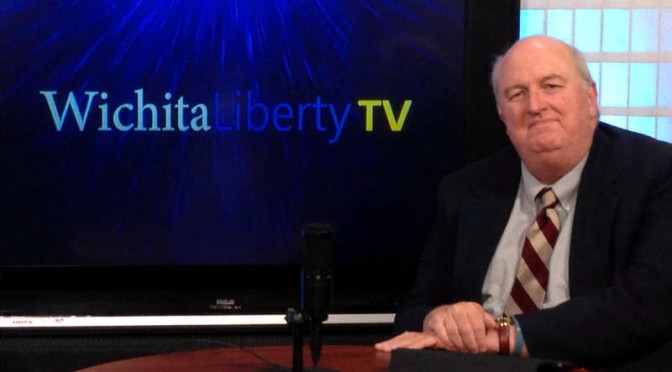A proposed downtown Wichita development deserves more scrutiny than it has received, as it provides a window into the city’s economic development practice that voters should peek through as they consider voting for the Wichita sales tax.
Next week a Wichita real estate developer will ask the Wichita City Council to approve a package of incentives for the redevelopment of Union Station in downtown Wichita. The proposal contains many facets that citizens need to understand. Additionally, the city’s handling of this matter is something that voters will want to keep in mind as they make their decision on the proposed Wichita sales tax in November.
The city’s documents on this matter are available at Resolution Considering the Establishment of the Union Station Redevelopment District (Tax Increment Financing).
Tax increment financing
Union Station LLC is asking for TIF, or tax increment financing. Most commonly, TIF works like this: A city borrows money (by issuing bonds) and gives the cash to a development. After the project is built and has a higher assessed value, the city uses the increased property tax payments (the “increment” in TIF) from the development to pay off the bonds. This obviously is risky for cities, because if the development doesn’t generate sufficient increment in tax payments to cover the bond payments, the city will have to make up the difference. This has happened in Wichita.
In recent years a new type of TIF has been created by statute, the “pay-as-you-go” TIF. Here, instead of issuing bonds and paying off the bonds with the incremental taxes, the city simply refunds the incremental taxes to the development. City documents describe: “The TIF statute also allows for projects to be financed on a pay-as-you-go basis, to reimburse the developer for eligible costs as TIF funds are received.”
This has less risk for cities, because if the hoped-for incrementally higher property taxes don’t materialize, the development doesn’t receive TIF proceeds. There are no bonds that must be paid. The developer just doesn’t receive what was projected. This is why the city claims that pay-as-you-go TIF has no risk to the city.
(Under pay-as-you-go TIF, since the city is essentially refunding nearly all property tax payments back to the development, we have to wonder why the city requires the taxes be paid at all. Also, there is the charade of spending TIF money only on “eligible” project costs. But the criteria for eligibility is broad, and we can be sure that developers will do all they can to make sure costs are characterized as eligible. But the eligibility criteria allows cities to appear to be fiscally prudent. Cities say they don’t allow TIF proceeds to be spent on just anything, but only on eligible costs.)
Here’s what the agenda packet says about this TIF: “Union Station LLC proposes to combine pay-as-you-go TIF with private financing to finance the proposed redevelopment project. The developer will finance through private sources all costs of the redevelopment project, including TIF-eligible project costs. Pay-as-you-go TIF revenue will be used to reimburse the developer on an annual basis with proof of expenditure of TIF-eligible redevelopment project costs.”
Buried in this paragraph is some financial slight-of-hand. Wichitans need to understand this so that they can be fully informed on this proposed transaction.
The problem lies is the meanings of the terms “to finance” and “to pay for.” Financing is the process of securing money to pay the costs of acquiring something. If financing is in the form of a loan, the economics of the transaction is that the borrower receives cash (assets go up) but also incurs an obligation to pay back the cash (liabilities go up by the same amount).
Then, when the borrower uses this cash to buy something — like a historic train station — one form of asset is exchanged for another. Cash is exchanged for title to the property.
It’s in the future, as the loan is repaid, that needs examination. The goal of real estate development is that the developer creates a project that generates more money coming in than loan payments going out. If this happens, it is a signal that the developer has met customer needs and has used capital in a way that makes everyone better off.
But there’s a confounding factor involved in the “pay for” part of the transaction that the city council will consider next week. The burden of some of the loan repayments will be born by the taxpayer. We don’t know for sure, but undoubtedly Union Station LLC will borrow money to make the project work. Proceeds from the TIF will be used to make at least some of the loan payments.
This is where the slight-of-hand comes in. The city says “The developer will finance through private sources …” That much is true. The city is not loaning any money. But some of the money used to pay back the private loans will come from TIF proceeds. So it is property tax payments being re-routed back to the developer that actually pays for part of the development: “Pay-as-you-go TIF revenue will be used to reimburse the developer on an annual basis …”
This is the heart of the transaction. It’s what citizens need to understand. Instead of Union Station LLC’s property taxes being used to pay the cost of government, nearly all of these taxes will pay off the owner’s loans.
The purchase of the property
Here’s what city documents state regarding the purchase of the property: “The $6,226,156 in equity is proposed to be in the form of $1,500,000 from the purchase of the property that will be contributed as collateral, $3,766,156 in monetized historic tax credits, and $960,000 in cash.”
It’s the “purchase of the property” that needs scrutiny. More from the city documents: “The developer would be compensated for the fair market value of the land where public access improvements would be located, not to exceed the $1,500,000 actual site acquisition cost. The Public Access Easement attachment illustrates that the portions of the site where a public access easement would be acquired is 274,059 square feet and that the average land acquisition cost of 10 comparable downtown properties is $6.71 per square foot, placing the fair market value of the land where the public access improvements would be located at $1,839,147.”
What’s happening is that part of the land area of the project is being called “public access improvements.” These are things like, according to city documents, “parking structure, pedestrian boardwalk, paving, utilities, and landscaping.” The city is proposing to pay the developer $1,500,000 for these areas.
If the council agrees to this, new avenues will have been opened for spending taxpayer funds. It places other commercial developers and landlords at a disadvantage. Consider, say, the recent Whole Foods Market that opened in Wichita. What Union Station LLC wants is like that developer asking to be reimbursed for the shrubs and grass that was planted, or the parking spaces that are provided. The public will, after all, view the sunlight reflected from the grass and breathe the oxygen generated by the shrubs. And, the public will park in the spaces. These “public access improvements” are part of what is necessary to provide an attractive and desirable development. It’s part of what businesses do to attract customers and earn profits. But the Union Station developer is asking that the city pay him for providing these things. If the council agrees to this, we can expect to see this template applied repeatedly in the future.
The missing tax credits
City documents state this regarding the sources of funds for the project: “Private to Public Investment Ratio — The proposed private capital investment is $36,578,000, and the proposed public capital investment is $17,321,000, resulting in a private to public capital investment ratio of 2.1 to 1.” But missing from this calculation is the contribution of taxpayers in the form of historic preservation tax credits. As reported above, the city reports the project will receive $3,766,156 in monetized historic tax credits.
(Tax credits are economically equivalent to a grant of cash from government. Commonly their value is used to boost the “private” equity contribution to the project. But since the tax credits come from government, we ought to call it the “peoples’ equity.”)
I inquired of city officials whether the historic preservation tax credits are federal, state, or both. The answer I received: “The Developer has not yet provided the City with details on the tax credits. However, staff analyzed the project to ascertain a ballpark estimate of how much it could generate in both state and federal tax credits and came up with a similar amount. We assume that $3,766,156 is the amount of net proceeds to be injected into the project from the sale of tax credits and that it is discounted from the face value of the credits.”
So it seems like the city is surmising things that may or may not be part of the developer’s plan.
False sales tax exemption applied
There’s another level of uncertainty in the city documents. In the analysis performed by Center for Economic Development and Business Research at Wichita State University, about $1.8 million in sales tax exemptions are included in the analysis. In my reading of the project documents, I didn’t see the project qualifying for sales tax exemptions. Upon inquiry to the city, I received this response: “The only incentive program available to Union Station that would provide a sales tax exemption is IRBs. The Developer did not request IRBs or a sales tax exemption. I would guess that CEDBR factored it into the cost-benefit analysis to be extra conservative.”
It appears there is a lack of communication between the city and CEDBR. More surmising. Exactly which incentives are available to be tapped by this project, and in what amount? Can we trust the analysis from CEDBR if it includes incentives that the project has not requested and is not eligible to receive?
Benefit-cost ratios

City General Fund, 1.04
City Debt Service Fund, 1.15
Total City, 1.08
Sedgwick County, 1.06
State of Kansas, 1.66
School district, 7.19
For the city and county, the ratios are far below 1.3 to 1. There are many exceptions and loopholes in the incentive policy that allows the city to participate in projects with less than the 1.3 ratio.
The (un)certainty of city policies
For this project we see that city policy is being modified on the fly to meet the circumstances of a particular project. This is not necessarily bad. Entrepreneurship demands flexibility. But the city promises certainty in its standards, and city officials say Wichita has a transparent, open government. The Public-Private Partnership Evaluation Criteria for the redevelopment of downtown Wichita states “The business plan recommends public-private partnership criteria that are clear, predictable, and transparent.”
But as in the past, we find the city’s policies are anything but predictable and transparent. City documents state: “In the opinion of the evaluation team, the established criteria do not adequately address projects such as Union Station where the requested incentives do not involve City debt.” So we see the “clear, predictable, and transparent” policies discarded and reformulated. How are future developers supposed to know which policies can be waived or rewritten? How are citizens supposed to trust that city hall is looking out for their interests when policies are so fluid?


















